
Carmilla is an 1872 Gothic novella by Irish author Sheridan Le Fanu and one of the early works of vampire fiction, predating Bram Stoker's Dracula (1897) by 25 years. First published as a serial in The Dark Blue (1871–72), the story is narrated by a young woman preyed upon by a female vampire named Carmilla, later revealed to be Mircalla, Countess Karnstein. The character is a prototypical example of the lesbian vampire, expressing romantic desires toward the protagonist. The story is often anthologised, and has been adapted many times in film and other media.

Roger William Corman was an American film director, producer, and actor. Known under various monikers such as "The Pope of Pop Cinema", "The Spiritual Godfather of the New Hollywood", and "The King of Cult", he was known as a trailblazer in the world of independent film.

Blood Bath is a 1966 American horror film directed by Jack Hill and Stephanie Rothman and starring William Campbell, Linda Saunders, Marissa Mathes, and Sid Haig. The film concerns a mad painter of weird art who turns into a vampire-like man by night, apparently as a result of a family curse, and believes that he has found his reincarnated mistress in the person of an avant-garde ballerina.
Queen of Blood is a 1966 science fiction horror film produced by George Edwards and Samuel Z. Arkoff, directed by Curtis Harrington, that stars John Saxon, Basil Rathbone, Dennis Hopper, and Judi Meredith. The film is based on the screenplay for the earlier Soviet feature film Mechte Navstrechu. Director Harrington also reused special effects footage from that film, as well as footage from the Soviet science fiction film Nebo Zovyot.

Gas-s-s-s is a 1970 post-apocalyptic black comedy film produced and released by American International Pictures.
Stephanie Rothman is an American film director, producer, and screenwriter, known for her low-budget independent exploitation films made in the 1960s and 1970s, especially The Student Nurses (1970) and Terminal Island (1974).
Barbara Peeters, also known as Barbara Peters, is an American director and screenwriter of television and film. She is best known for her collaborations with producer-director Roger Corman on films such as Humanoids from the Deep, and directing episodes of television shows such as Remington Steele.

Celeste Jeanne Yarnall was an American actress primarily of the 1960s and 1970s. She started her career on television before moving to feature film roles.

The Big Doll House is a 1971 American women-in-prison film starring Pam Grier, Judy Brown, Roberta Collins, Brooke Mills, and Pat Woodell. The film follows six female inmates through daily life in a gritty, unidentified tropical prison. Later the same year, the film Women in Cages featured a similar story and setting and much the same cast, and was shot in the same abandoned prison buildings. A nonsequel follow-up, titled The Big Bird Cage, was released in 1972.

It's a Bikini World is a 1967 American musical comedy film starring Tommy Kirk, Deborah Walley and Bobby Pickett. The film features cameos by the music groups the Gentrys, the Animals, Pat & Lolly Vegas, the Castaways and R&B girl group the Toys. Featuring a pro-feminist plotline, it is the only film in the beach party genre to be directed by a woman.

The Student Teachers is a 1973 film directed by Jonathan Kaplan. It was inspired by the "nurse" cycle of pictures starting with The Student Nurses (1970). Roger Corman says it was one of the best of the cycle.
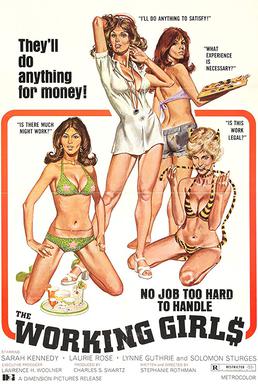
The Working Girls is a 1974 sexploitation film written and directed by Stephanie Rothman and starring Sarah Kennedy, Laurie Rose and Cassandra Peterson.
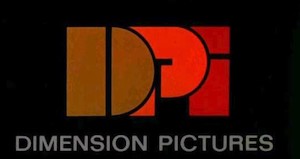
Dimension Pictures Inc. (DPI) was an American film studio founded in 1971, which primarily released exploitation and horror films. The studio went defunct in 1981, after which many of its films were acquired by 21st Century Film Corporation.

Starhops is 1977 exploitation comedy film directed by Barbara Peeters, based on a script by Stephanie Rothman, writing under a pseudonym, and was edited by future Oscar winning screenwriter Steve Zaillian.
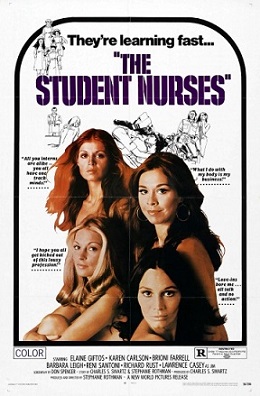
The Student Nurses is a 1970 American film directed by Stephanie Rothman. It was the second film from New World Pictures and the first in the popular "nurses" cycle of exploitation movies. It has since become a cult film.
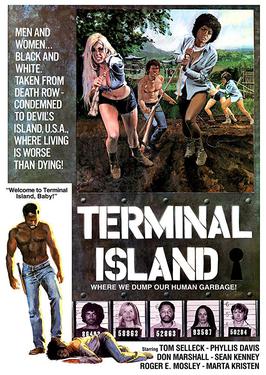
Terminal Island, released theatrically in the U.K. as Knuckle Men, is a 1973 American action–drama thriller film directed by Stephanie Rothman. It features early screen performances by Tom Selleck and Roger E. Mosley. Although an exploitation film, it has been treated with much serious discussion by critics and academics over the years. It is regarded as a cult film.

Group Marriage is a 1972 sex comedy film directed by Stephanie Rothman. It was the first film she made for Dimension Pictures, a company in which she was a minor shareholder with her husband Charles Swartz along with Larry Woolner.
Charles Samuel Swartz was an American filmmaker, researcher, and academic. He was raised in Dallas, earned a degree from Yale University and did graduate work at the University of Southern California. At USC he met and married another film student, Stephanie Rothman. He and Rothman worked together on a number of films for Roger Corman and were involved in the establishment of Dimension Pictures.
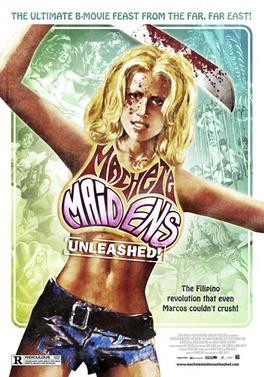
Machete Maidens Unleashed! is a 2010 Australian documentary film directed by Mark Hartley.

Dance of the Damned is a 1989 American film directed by Katt Shea and executive produced by Roger Corman.

















